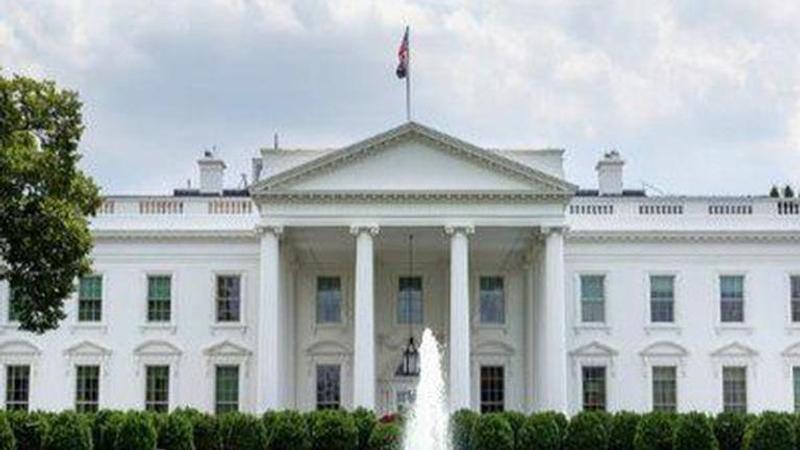Published 18:36 IST, October 6th 2020
White House nixes updated FDA guidelines on vaccine approval
The White House has blocked new Food and Drug Administration guidelines on bringing potential vaccines for COVID-19 to market that would almost certainly have prevented their introduction before the Nov. 3 election.

The White House has blocked new Food and Drug Administration guidelines on bringing potential vaccines for COVID-19 to market that would almost certainly have prevented their introduction before the Nov. 3 election.
At issue was the FDA's planned instruction that vaccine developers follow patients enrolled in their trials for at least two months to rule out safety issues before seeking emergency approval from the agency.
A senior administration confirmed the move Monday evening, saying the White House believed there was “no clinical or medical reason” for the additional requirement.
The White House action was first reported by The New York Times.
The intervention by Trump officials is the latest example of the administration undercutting its own medical experts working to combat the pandemic that has killed more than 210,000 Americans.
FDA Commissioner Stephen Hahn has been attempting to shore up public confidence in the FDA's vaccine review for weeks, vowing that career scientists, not politicians, will decide if the shots are safe and effective for mass vaccination.
But President Donald Trump has repeatedly insisted that a vaccine could be authorized before Election Day, even though top government scientists working on the administration's vaccine effort have stated that that timeline is very unlikely.
Last week seven former FDA commissioners blasted the administration for “undermining the credibility” of the FDA in a Washington Post op-ed and called for the release of the pending vaccine guidelines."
The former FDA chiefs warned that public fears that a vaccine was rushed out for political reasons could derail efforts to vaccinate millions of Americans.
The senior administration official, who spoke on the condition of anonymity to discuss the action, said the White House was intent on getting a safe vaccine to market and wanted to make sure “additional loopholes” weren't added that would slow down the process.
Beyond the damaging optics of overruling its own FDA, the practical impact of the White House move against the guidelines could be relatively limited.
Only one drugmaker, Pfizer, has suggested it could have data on the safety and effectiveness of its vaccine before Election Day. And a number of variables would still have to align for the company to submit, and the FDA to review and greenlight, a vaccine application before Nov. 3. Pfizer's competitors Moderna, AstraZeneca and Johnson & Johnson are working on longer research timelines.Additionally, FDA scientists have been discussing the contents of the guidelines publicly for weeks and have made clear that the recommendations have already been shared with each of the vaccine developers.
“There's no there there to get all excited about this guidance,” said Dr. Peter Marks, the head of FDA's vaccine division, in an online interview last week with the nonprofit Friends of Cancer Research.
The companies know what we're expecting,added Marks.
Instead, Marks said, releasing the guidelines was “an attempt to help the public see what we're requiring of COVID-19 vaccines.”
He added that the guidelines would explain that all upcoming vaccines would be reviewed by FDA's independent panel of outside vaccine advisers, before the agency makes its own final decision.Marks explained Monday that the two months of safety follow-up for vaccines is important because the most serious side effects connected with shots often occur in the first several weeks after vaccination.
“The safety profile of a vaccine that's going to be used in millions of people has to be incredibly clean,” Marks said in an online discussion with the Journal of American Medical Association.
When asked about the potential timing for a first vaccine, Marks said an emergency authorization could come “before the end of the year.”
The guidelines blocked by the White House are a type of nonbinding document that the FDA routinely uses to advise companies on research and regulatory standards for medical products.The FDA released its initial expectations for COVID-19 vaccines in June. Among other metrics, the agency said that any vaccine would have to be at least 50% protective against the virus.
But the guidelines didn't spell out the conditions under which the FDA would use its emergency authorization powers to speed up the availability of a vaccine. Under emergency review, medical products face a lower standard than full that merely requires that their expected benefits outweigh their risks for use during a public health crisis.The lack of specifics around using the emergency authorization for a vaccine became a flashpoint for outside experts, physicians and even politicians. FDA officials then began drafting a second guidance document with additional details.
Among other things, the guidelines would have made clear that any vaccine approved through the emergency pathway would still need to meet FDA's preset safety and effectiveness standards. Instead, the expedited process would be used to bypass certain logistical and regulatory hurdles, such as the thousands of pages of manufacturing documentation normally required for a traditional vaccine application.
Emergency authorization for a vaccine would likely limit initial use to medical and other frontline workers, nursing homes and people most at risk of catching or becoming seriously ill from the virus.
(IMAGE CREDITS:Twitter/@WhiteHouse)
(This story has not been edited by www.republicworld.com and is auto-generated from a syndicated feed.)
Updated 18:36 IST, October 6th 2020




